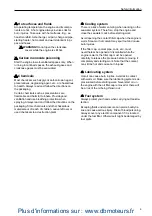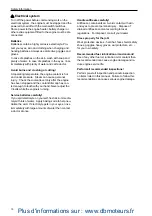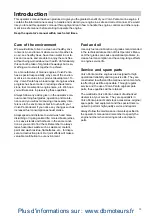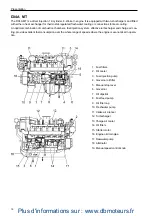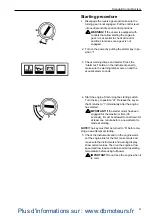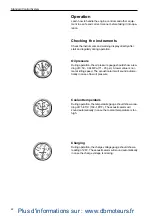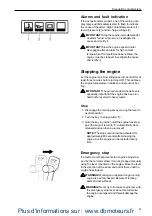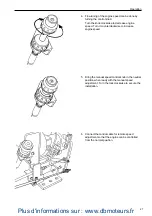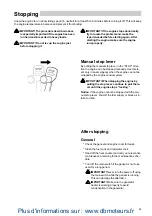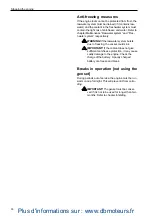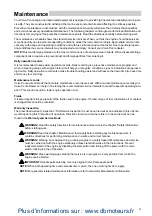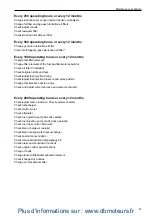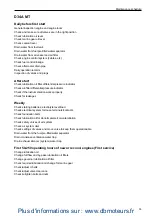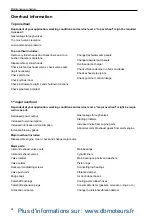
23
Standard Control System
Alarms and fault indication
If the acoustic alarm sounds, one of the warning dis-
play lamps will immediately start to flash to indicate
the cause of the alarm: High coolant temperature (1),
low oil pressure (2) and no charge voltage (3).
IMPORTANT! Stop the engine immediately after
an alarm for low oil pressure. Investigate the
cause and rectify it.
IMPORTANT! Slow the engine speed to idle/
disengaged after an alarm for high coolant
temperature. If temperature does not drop, the
engine must be stopped. Investigate the cause
and rectify it.
Stopping the engine
Let the engine run at low idling speed (in neutral) for at
least three minutes before turning it off. This will keep
the engine temperature in balance and prevent it boi-
ling.
IMPORTANT! The procedure described above is
especially important if the engine has been run
hard and/or exerted to heavy loads.
Stop
1. Disengage the marine gear by moving the lever to
neutral position.
2. Turn the key to stop position “S”.
3. Hold the key in position until the engine has stop-
ped (the key will return to “0” automatically when
released and can then be removed).
NOTE! The stop solenoid will be activated for
approximately 40 seconds after stopping the
engine, but the engine can be restarted at any
time.
Emergency stop
If a fault occurs that prevents the engine being stop-
ped by the normal method, it can be stopped manually
using the lever mounted on the engine. Move the lever
in the direction of the arrow and hold it there until the
engine has stopped.
WARNING! Working on or approaching a running
engine is a safety hazard. Beware of rotating
parts and hot surfaces.
WARNING! Never try to increase engine rpm with
the emergency stop lever since this will make
the engine overspeed and this will damage the
engine.
Plus d'informations sur : www.dbmoteurs.fr

